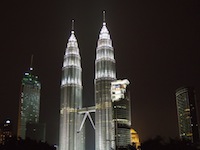 |
|||||||||||||
|
|
|||||||||||||
|
NTT around the World Vol. 9, No. 9, pp. 57–64, Sept. 2011. https://doi.org/10.53829/ntr201109ov1  NTT MSC
|
|||||||||||||
| † | NTT MSC No. 43000, Persiaran APEC, 63000 Cyberjaya, Selangor, Malaysia |
|---|
1. Introduction
1.1 Malaysia
Malaysia is strategically located in the heart of South East Asia, along the Straits of Malacca, one of the world's most important sea routes connecting Asia, Europe, and the Middle East. Separated by the South China Sea, Peninsular Malaysia is bordered by Thailand to the north and Singapore to the south while East Malaysia is situated on the island of Borneo, which Malaysia shares with Indonesia [1] (Fig. 1).
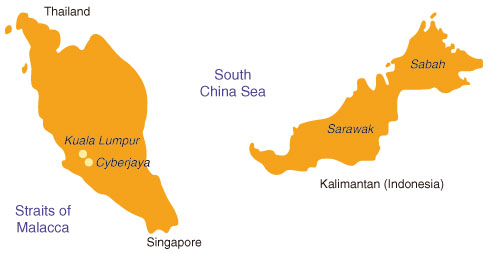
Fig. 1. Map of Malaysia.
Located near the equator, Malaysia experiences a hot and humid tropical climate throughout the year with warm days and fairly cool nights. The rainy season varies with two monsoon seasons: the southwest monsoon from late May to September and the northeast one from October to February.
As of 17 June 2011, the Malaysian population was approximately 28.5 million, out of which Malays and other Bumiputera groups make up 65%, Chinese 26%, Indians 8%, and other unlisted ethnic groups 1%. Multiculturalism has not only made Malaysia a gastronomical paradise, but also a country with colourful festivals.
Malaysia is a distinctive and peaceful country. The unity and vivid mesh between the complex diverse races, religions, and cultures is a unique characteristic of Malaysia. This multiethnic country, consisting of Malays, Chinese, Indians, Eurasians, and other races, has lived in a harmonised environment for generations.
1.2 NTT MSC Sdn Bhd
Established in 1997, NTT MSC Sdn Bhd, short for "sendirian berhad" (Malay equivalent to incorporated), was named after the renowned Multimedia Super Corridor (MSC), currently known as MSC Malaysia, a national information and communications technology (ICT) initiative conceptualised in 1996 as one of the main programs to accelerate Vision 2020°›°›the strategic intent of the Malaysian government to transform Malaysia into a developed country by the year 2020.
NTT MSC's head office is strategically based in Cyberjaya, while the sales office is located in the heart of Kuala Lumpur's Golden Triangle (Figs. 2 and 3).
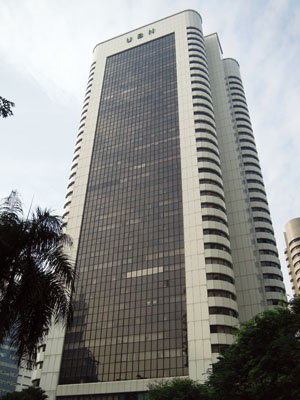
Fig. 2. Sales office in the UBN Tower.
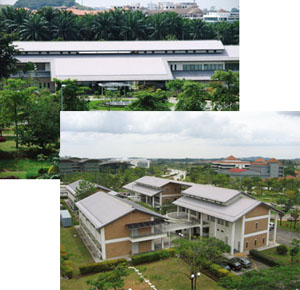
Fig. 3. Head office at Cyberjaya.
We were the first foreign company to be awarded MSC status, which is awarded to companies that develop or utilise internationally recognised multimedia technologies in their business activities. The status comes with a host of privileges including financial and non-financial incentives and world-class physical and communication infrastructure.
With years of experience in the Asia Pacific region, we are committed to providing the right solutions to corporate customers in order to meet their stringent individual business needs in ICT.
2. NTT MSC––our current services
As a wholly owned subsidiary of NTT Communications Corporation, NTT MSC provides enterprises, multinational companies, and service providers with one-stop business communication solutions. We offer ICT services such as NTT Communications' renowned Arcstar™*1 global private network services and Global IP Network services, data centre services, high-quality connectivity services, systems integration services, IT (information technology) management, and ICT-related services (IP: Internet protocol).
Our Arcstar services are secure closed-network services that span more than 159 countries worldwide. Some of the key features of our end-to-end global connectivity solution include access to various connectivity technologies, customer support 24/7 from our multilingual helpdesk, monitoring and maintenance services, and service level agreements (SLAs) as part of our commitment to providing high service availability (Photo 1).
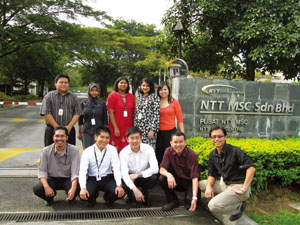
Photo 1. NTT MSC staff.
NTT Communications' Global Tier-1 IP Network service provides seamless Internet connectivity using a single autonomous system number. Through this world-class global tier-1 backbone, which covers Asia, Oceania, Europe, and North America, customers have direct connections to major Internet service providers in many countries, making Internet access faster with minimal delay. The high-quality Global IP Network service enables us to provide customers with the highest SLA in the Internet industry. This SLA applies automatically to customers of NTT Communications' IPv4 and IPv6 Transit Service and Collocation Connectivity Service.
Our data centre solution offers a full range of services to provide flexibility and scalability to cater for our customer's growing demand. Our data centres deliver a high-quality service based on innovative technology, a secure environment, and state-of-the-art facilities. We have built and designed our data centres to include reliable and redundant power and network infrastructure, effective cooling mechanism, and facility monitoring and management systems.
To complement our core services, we provide a full suite of fast and reliable Internet services, system integration services, and IT management services as a total one-stop ICT solution.
| *1 | Arcstar is a registered trademark of NTT Communications. |
3. NTT MSC––our market potential
In spite of the moderate economic growth projection (5.2%) current year’s and the fragility of the US recovery, there are still attractive opportunities in the ICT services area particularly as the Malaysian government implements measures to make Malaysia into a world-class data centre hub. The strong growth fundamentals and top initiatives that are expected to accelerate ICT growth are (1) ICT-friendly budget measures, (2) the National Broadband initiatives that push for greater broadband penetration, and (3) growing interest in cloud computing.
In terms of telecommunication services, fixed-line (wired) data communications is expected to grow 12.7% followed by wireless data and wireless voice at 10.3% and 3.8%, respectively. MPLS-enabled IPVPN service is expected to increase in line with the migration of ATM and frame relay services (MPLS: multiprotocol label switching, IPVPN: IP virtual private network, ATM: asynchronous transfer mode). PSTN (public switched telephone network) revenues will continue to decline as users shift to VoIP (voice over IP) technology.
4. NTT MSC––our strength
4.1 Global delivery and operations centre
In early 2011, we began full-scale operations of NTT Communications’ Global Delivery and Operations Centre (GDOC). Through our collaboration and close relationship with Emerio, we are able to access an industry-relevant workforce and a greater pool of dedicated and experienced professionals. This multicultural multilingual team supports the Asia Pacific region, including China, Southeast Asia, and Japan, as well as other regions such as the USA and Europe.
At NTT MSC, GDOC supports the Arcstar Global Services by providing a full range of implementation, maintenance, monitoring, and management services. This is executed through three key functions: Arcstar Project Management, Arcstar Global Provisioning, and Arcstar Global Front. Their main activities are outlined below.
(a) These functions offer customers a complete set of network implementation services ranging from large-scale project implementation and management and detailed network design to customer equipment configuration to meet the many stringent requirements of our customers.
(b) Together with teams in Tokyo, the USA, and Europe, the Global Provisioning Team carries out primary regional and global support work including processing order receipts, installations, and circuit operations to ensure that customers, network requirements are delivered with the highest quality and in a timely manner.
(c) The Global Front Team, which is available 24/7, works directly with our telecommunication partners, the NTT International Transmission and Maintenance Centre (ITMC), and the backend Tokyo, New York, and London network operations centres (NOCs) to ensure that all customer requests and issues are resolved rapidly, appropriately, and within stipulated service levels, which are provided with all Arcstar services. The Global Front Team also works on all Level 2 or Level 3 node operation work, network monitoring, trouble isolation, and restoration.
(d) Regular monthly videoconference updates and key performance indicators monitoring between NTT Communications, the respective offshore centre function groups, and other stakeholders ensure the highest quality of services and functions for both the Global IP Network and Arcstar Global network services.
Having the GDOC team located within our 15.6-acre headquarters in Cyberjaya ensures that deployments and any expansion of global network services are undertaken swiftly and effortlessly. As the hub for the regional project managers and system engineers, NTT MSC is able to carry out large-scale project implementation and management, configuration, installation, testing, circuit operations, and support. GDOC works directly with NTT’s telecommunication partners and regional NOCs to ensure that all customers’ requests and issues are rapidly resolved within the stipulated service-level parameters, reinforcing our commitment to high-quality service.
4.2 Flexible and scalable data centre services
In Malaysia, we have two dedicated data centres located in Cyberjaya. They have been designed to cater for enterprises that require secure, resilient, and reliable data centre services as well as multinational companies that need quick, flexible solutions with high power requirements.
Data centre demand has continued to grow steadily over the past few years. Demand was further fuelled by the recent 9.0 magnitude earthquake in Japan, where requests for disaster recovery solutions—particularly disaster backup, recovery operations, and remote office sites—have increased. The increasing trend was consistent with our expansion plan to construct a third facility, which is expected to commence operations in the first quarter of 2012.
Our new data centre, Cyberjaya 3 Data Centre (Fig. 4), which consists of a three-storey data centre and four-storey office building, comes with a modular design to address customers’ needs for cost effective, energy-efficient, and scalable infrastructure solutions. This tier-3 data centre will offer customers a low total cost of ownership (TCO), equivalent to one third of the TCO in Japan. Equipped with a well-developed infrastructure and facilities that meet international standards, this data centre will emphasise green technology innovations including solar energy generation, rainwater harvesting systems, renewable energy technology, inverter techniques, and double-wall technology. Amongst the services offered at this data centre are disaster recovery solutions, cloud computing, and server consolidation platforms.
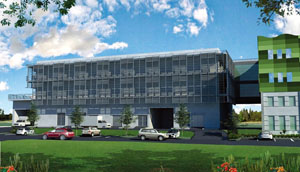
Fig. 4. New Cyberjaya 3 Data Centre.
4.3 Multiservice telecommunication licences
After fourteen years of operations, we currently hold three out of the four different multiservice telecommunication licences in Malaysia. Achieving this as a wholly owned foreign company was possible only through our active participation in the development of the MSC and continuous commitment towards making Malaysia an ICT hub and regional centre for Internet traffic.
Since August 2000, we have held an Application Service Provider (Class) licence issued by the Malaysian Communications and Multimedia Commission (MCMC), the industry regulator in Malaysia. This licence enables us to provide specific services to end-users such as IP telephony services, Internet access services, and public switched data services.
In 2005, we were awarded the Network Service Provider (NSP) licence by MCMC for the provision of Global IP Network and Arcstar global private network services. The NSP licence authorises us to provide connectivity and bandwidth services that support a variety of applications. Subsequently, in Sept 2010, we received the Network Facility Provider (NFP) licence, which authorises us to offer network facilities services including fixed links and cables and a submarine cable landing centre.
Through such licences, we are working towards offering competitive products and services and introducing new Internet developments to further enhance the Internet industry in Malaysia.
5. Information security management
ICT has become a powerful enabler improving both communication and the exchange of information. As organisations become heavily reliant on ICT to support their core business operations, processes, and systems, they require assurance and peace of mind that their information is safeguarded.
To demonstrate our commitment to information security, we attained the ISO/IEC 27001:2005 certification in 2010 for our operations and supporting functions in Malaysia and for the delivery of services: specifically data centre and network services (IEC: International Electrotechnical Commission). The certification further validates that our operations and service provision have surpassed the rigorous requirements of the ISO standard.
The ISMS*2 certification covers data centre and domestic network services and all critical business functions including network operations, data centres and IT managed centres, project management and implementation, sales, project strategy, corporate planning, accounting, purchasing, legal, human resources and administration, management information systems, product management, and business development.
| *2 | ISMS is a part of the overall management system, based on a business risk approach, to establish, implement, operate, monitor, review, maintain, and improve information security. |
6. Social responsibility
In NTT MSC, we believe in contributing positively to our communities. To fulfil this commitment, we have participated in numerous projects that help create knowledge workers and build the ICT industry.
6.1 MSC Malaysia
Since 1996, NTT MSC and the NTT Group have contributed to the establishment of the MSC Malaysia Master Plan and the following flagship applications [2] (Fig. 5). They have actively participated in the MSC Malaysia project’s initial planning stages and development. Specialist teams from NTT MSC and the NTT Group have worked on various aspects: the electronic government project with MAMPU (Malaysian Administrative Modernisation and Planning Unit), multipurpose smartcards with Bank Negara, the smart school project with the Ministry of Education, and telemedicine implementations with the Ministry of Health. All these projects were incorporated into the policy blueprint for MSC Malaysia flagship applications.
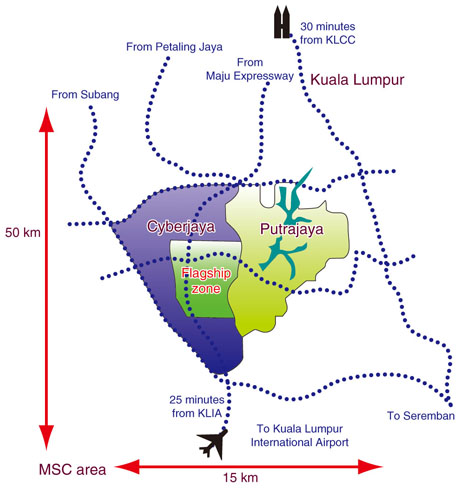
Fig. 5. Multimedia Super Corridor (MSC).
NTT MSC has seconded staff based at the Multimedia Development Corporation (MDeC) to advise on the construction of communications infrastructure and support Japanese investment in Malaysia, especially in the MSC Malaysia area. For technology transfer, the NTT Group has worked together with MIMOS (Malaysian Institute of Microelectronic Systems) for the transfer of large-scale integration technology since 1998.
NTT MSC and the NTT Group have been recognised and commended by the Malaysian Government as active and strong supporters of the MSC Malaysia project. This commitment was demonstrated through the annual participation in the International Advisory Panel (IAP) by the NTT Group. The former President and CEO of NTT Communications Corporation, Masanobu Suzuki, personally attended most of the IAP meetings and continuously provided valuable advice and support to the Panel towards achieving the MSC Malaysia’s objectives (Photo 2).
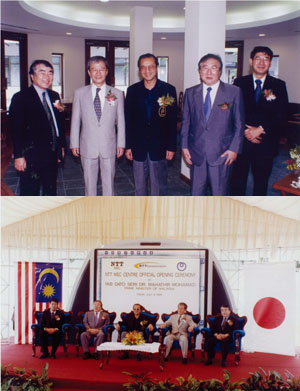
Photo 2. NTT MSC head office official opening ceremony and MSF governor and scholars.
6.2 Multimedia Scholarship Foundation
Incorporated in March 1998, the Multimedia Scholarship Foundation (MSF) was a collaboration between NTT Corporation, NTT DATA, NTT Finance, and NTT Urban Development. Its objective was to provide financial assistance to undergraduates and postgraduates to pursue their studies at Multimedia University (MMU) Cyberjaya through a scholarship program (Photo 3).
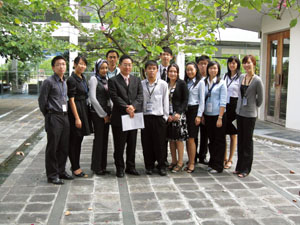
Photo 3. MSF governor and scholars.
This program is part of an initiative to support and develop knowledge workers as well as contribute to the growth of the ICT industry in Malaysia. As the program administrator, NTT MSC manages the scholarship fund, scholarship awarding process, and consequent employment opportunities with companies in the NTT Group. Since its inception in 1998, there have been more than 30 scholars in this program (Photo 4).
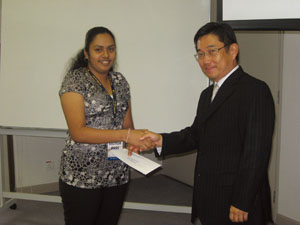
Photo 4. MSF scholarship awarding ceremony.
In addition to the scholarship program, we have contributed to MMU in other ways such as technical assistance, collaborative research and development activities, educational activities such as classes and seminars, research and development programs, advisory activities, and planning for the university’s educational enhancement program.
6.3 IT and HR seminars
We have endeavoured to contribute to IT and human resource (HR) development and knowledge transfer into Malaysia. One of the initiatives undertaken in early years of establishment was organising IT/HR-related complementary seminars to increase IT awareness among Malaysians.
NTT MSC together with the Overseas Vocational Training Association (OVTA) in cooperation with the Malaysian Ministry of Human Resources and the Japanese Ministry of Health, Labor and Welfare has organised Asia Pacific Economic Cooperation (APEC) IT/HR seminars in Malaysia. This yearly event is organised with the objectives of creating awareness of the benefits of IT and the influences of applying IT to business and management. Various distinguished speakers from industry and academia have been invited to share their knowledge, experience, and findings with the public.
References
| [1] | Department of Statistics Malaysia.
http://www.statistics.gov.my/portal/ |
[2] | Setia Haruman Sdn. Bhd.
http://www.cyberjaya-msc.com/msc.asp |
|---|
NTT MSC — short column
In Malaysia, festivities are commonly celebrated together by all communities and races through the open house tradition, where everyone is invited to join the festivities. This unique and distinctive tradition is practiced by all races in Malaysia.
During the various cultural and religious festivals, friends, families, and even strangers are invited into the homes of those celebrating the festivals. All are welcomed with open arms and hearts to enjoy the special feast prepared by the hosts.
This tradition of celebrating cultural events together with those of the different races and cultures has helped create goodwill and improve tolerance and mutual understanding among communities and society. Even government officials participate in such activities by organising open house events at public halls where everyone is invited to enjoy the traditional delicacies and meet the ministers.
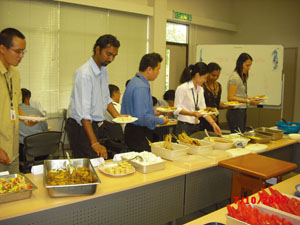
NTT MSC Hari Raya Open House.
Motorcycles are a common sight on roadways throughout Malaysia. What is surprising to foreigners is to see a motorcyclist wearing his or her jacket back to front! It is not a local fashion trend but a means of protecting one’s front from wind chill and arms from the strong sunlight. The hot humid tropical weather combined with wind chill makes it extremely unpleasant to wear a zipped- or buttoned-up jacket in the more usual manner. In fact, with the year-round heat, many Malaysians tend to wear short-sleeved shirts or tops to keep cool. Thus, the simple jacket on the front serves two key roles for our motorcyclists: it protects the front upper torso from wind chill while allowing heat and moisture to escape from the back and it protect the arms from the scorching sun.
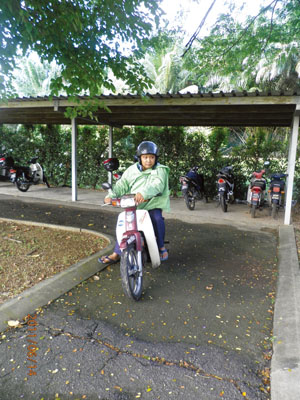
Batik designs.
When you speak to a Malaysian, you may notice the frequent usage of the word ‘lah’ in conversations, especially at the end of a sentence, regardless of the language. It may seem confusing at first, but this simple word can be applied in numerous ways to assert a position and entice solidarity. Commonly appended to the end of a word, it is often used to emphasise or reinforce a feeling such as ‘Don’t disturb me lah’ or to soften a tone that may seem impolite ‘No lah’. At times, it is used for reassurance, for example, ‘Don’t worry lah’ or ‘It’s okay lah’.
Lah is not a separate word by itself, so there is never a pause before it. And in spite of being common, it is not used at the end of every sentence. Using it properly is actually quite difficult for those who were not born into the language environment. It is a typical manglish word originating from the English, Malay, Hokkien, Mandarin, Cantonese, Tamil, etc., commonly spoken in Malaysia, reflecting the county’s unique identity.
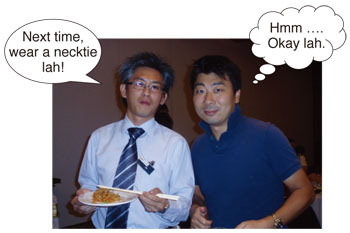
Use of lah in daily conversation.
Malaysian batik is famous for its geometrical designs, leaves, and flower motifs. Unlike Javanese batik, Malaysian batik tends to have larger and simpler patterns with lighter and more vibrant colours. It is no surprise that with its historical significance and in line with the 1 Malaysia*3 concept, the Malaysian government is now endorsing Malaysian batik as a national dress.
This beautiful batik cloth was originally worn as casual and daily wear. Now, it is combined with modern fashion, and even a baby cradle has been commercialised. Batik has gained global and international recognition and is available in a variety of textile types for both men’s and women’s garments. Batik has been well received as one type of formal attire that can be worn to any formal event in Malaysia and it is commonly used for formal office wear.
With unlimited creativity in ideas nowadays, many other things have been created from batik including scarfs, neckties, furnishing fabrics, heavy canvas wall hangings, tablecloths, and household accessories. Although it is undeniable that batik is also produced in some other countries, Malaysia, with its own particular technique reflecting the unity of the country’s multiculturalism and ethnic diversity, has given it a new touch and created a bigger presence in the current fashion industry.
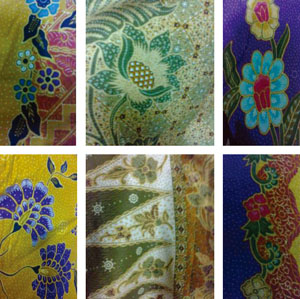
Batik designs.
| *3 | 1Malaysia is an on-going programme created by the Prime Minister. |







